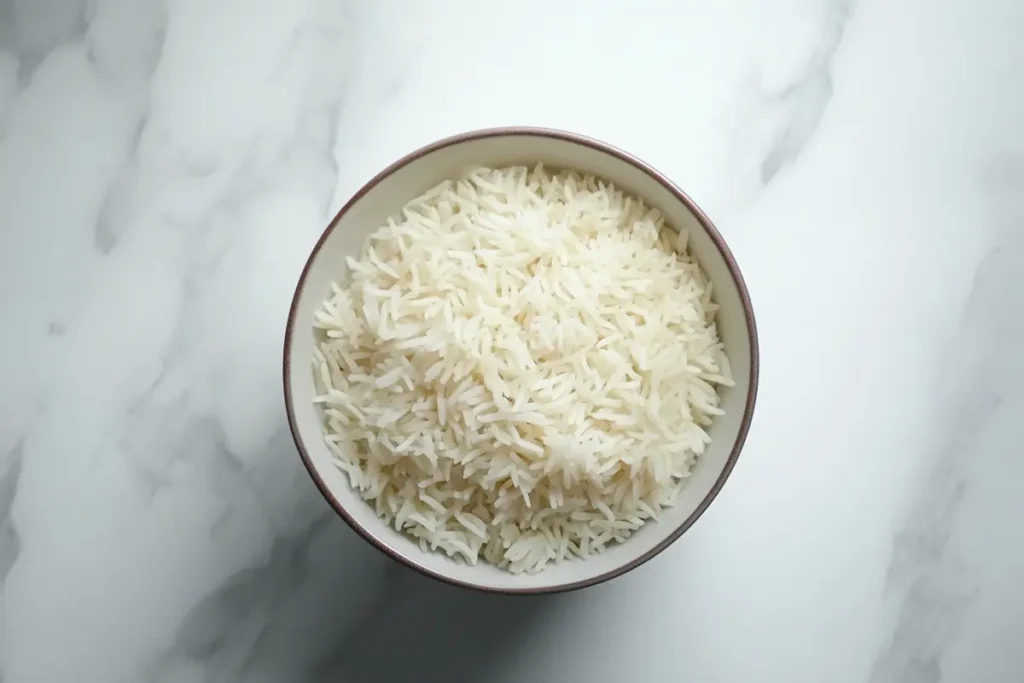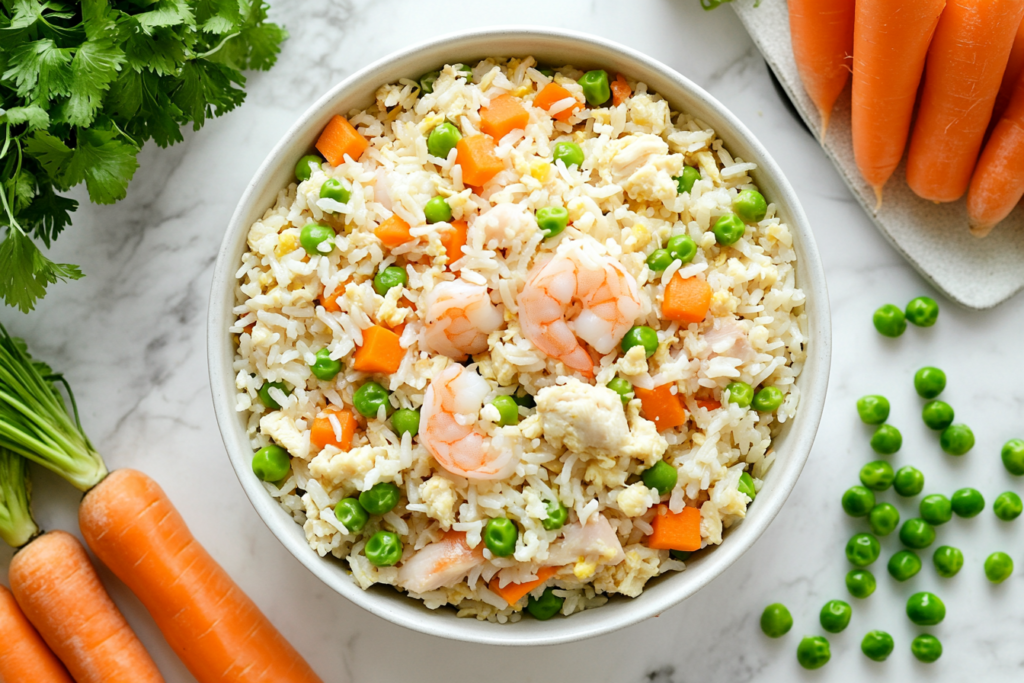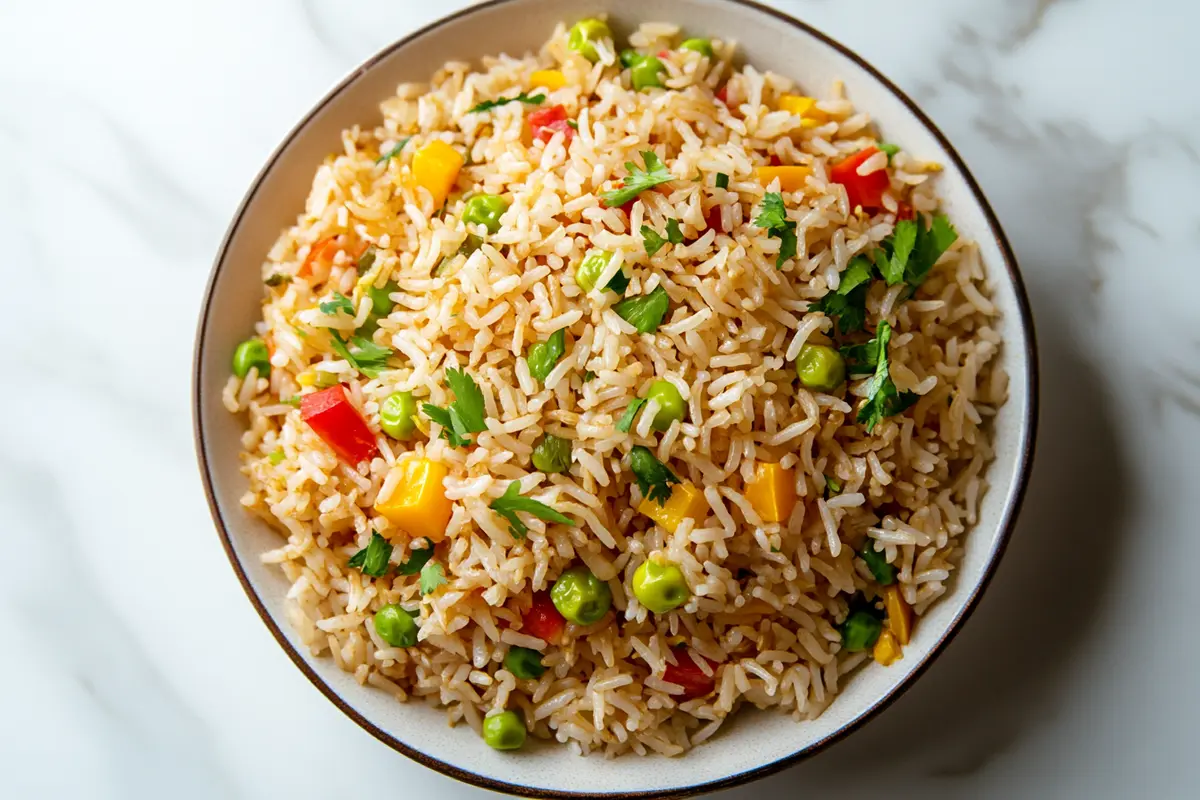Learn which rice is best for making authentic Chinese fried rice. This guide will help you achieve perfect texture and flavor.
The Importance of Choosing the Right Rice
Selecting the appropriate rice is paramount for achieving delicious fried rice. The wrong type of rice can lead to a mushy, undesirable dish. Therefore, knowing which rice works best is crucial. This ensures your fried rice turns out perfectly every time. The goal is a dish with distinct grains. The foundation of good fried rice is using the right rice. This is often overlooked but vital.
Understanding Different Rice Varieties
Not all rice is created equal when it comes to fried rice. There are numerous types of rice available. However, only a few are truly suitable for stir-frying. Long-grain rice is generally considered the best choice. Conversely, short-grain rice is usually not ideal. Thus, understanding the differences is essential. Knowing these differences can greatly improve your fried rice.
Long-Grain Rice and Its Benefits
Long-grain rice, like basmati or jasmine, has a lower starch amount. Accordingly, it doesn’t become as sticky when cooked. This is key for fried rice. You want individual grains. Long-grain rice also tends to cook up fluffier. Therefore, it’s a superior option for this dish. The low starch content is key to the correct texture. This gives fried rice its characteristic loose grain structure.
Why Short-Grain Rice Fails
Short-grain rice, such as sushi rice, contains more starch. Consequently, it tends to clump together easily when cooked. This can lead to sticky and mushy fried rice. Therefore, short-grain rice is generally avoided in this recipe. Its properties are not suitable for stir-frying. The high starch means the rice grains will stick together. This will prevent the desired separate texture.
The Crucial Step of Using Day-Old Rice
Using day-old rice is a well-known tip among fried rice experts. Freshly cooked rice is typically too moist. This moisture can cause the rice to steam instead of fry. Therefore, using day-old rice is strongly advised. It helps achieve the ideal texture. This technique is fundamental for achieving that desired fried rice. It helps in texture as well as flavor.
Drying Out the Rice for Optimal Texture
Day-old rice has had time to dry out. Thus, it fries more effectively. The drier grains also absorb flavors better. This also helps each grain stay separate. Moreover, using day-old rice also minimizes mushiness. This step helps make better tasting fried rice. The dryness makes it perfect for stir-frying. It does not steam, but crisps up nicely.
Properly Storing Cooked Rice
To prepare for fried rice, cook your rice a day ahead. Spread the cooked rice on a plate to cool quickly. Store it in an airtight container in the fridge overnight. This allows the moisture to evaporate. Afterward, the rice is ready for use. This step greatly helps when making fried rice. This process is vital for a successful outcome. It is often overlooked but necessary.
Preferred Types of Long-Grain Rice
When it comes to long-grain rice, several types shine in fried rice. Jasmine rice and basmati rice are among the most popular. Both options offer distinct flavors and stay relatively separate when cooked. However, basmati rice is often favored for its drier nature. This makes it a slightly better choice. The slight differences do make a significant impact.
Jasmine Rice: Aromatic and Versatile
Jasmine rice is known for its fragrant, slightly floral aroma. It cooks up with a slight stickiness. While it works well in fried rice, it might be a bit less dry than basmati. It is still a great choice that adds flavor. Many love using it in fried rice. Its aromatic quality also improves the dish. This helps make a more vibrant experience.
Basmati Rice: The Ideal Choice for Texture
Basmati rice is known for its long, slender grains. It cooks up very light and fluffy. Furthermore, it is less sticky than jasmine rice. Therefore, basmati rice is often considered the best type of rice for fried rice. Its texture holds up well in a hot wok or pan. This is why it is often the go-to option for good rice. It helps create a truly authentic texture.
Achieving the Perfect Rice Texture

Proper cooking of the rice is just as important as choosing the right variety. The goal is to have individual, separate grains of rice. Consequently, you must avoid overcooking, which will result in sticky rice. The cooking process must be done correctly. This will determine if the end result is perfect. The proper texture is also crucial to the final product.
Using the Correct Water Ratio for Cooking
Use the correct ratio of water to rice. Generally, a ratio of 1:1.5 (one part rice to one and a half parts water) works best. Too much water will cause the rice to be too wet. On the other hand, not enough water will leave it undercooked. This part is very important for achieving perfect fried rice. Accurate measurements are extremely vital for the process. A little too much or too little water will impact the overall texture.
The Importance of Steaming After Cooking
After the rice is cooked, let it steam for a few minutes with the lid on. This allows it to fully cook through. Then, gently fluff it with a fork. Afterward, spread it on a plate or baking sheet to cool. This also helps in further drying before stir-frying. This yields perfect rice. The steaming allows the rice to absorb all the water. This helps in fluffing it properly.
Key Steps in Stir-Frying Process
Once the rice is properly prepared, the next step is stir-frying. High heat and quick, efficient movements are key to creating the right fried rice texture. Therefore, correct technique is very important for great flavor. This involves prepping and using high heat. A good stir-fry technique will make or break your rice. It is more important than many people think.
Techniques for Stir-Frying
Use a wok or large frying pan for the best results. Heat it up on high until it’s very hot. Then add your additions and stir-fry quickly. Specifically, do not overcrowd the pan. This can lower the temperature, leading to steaming instead of frying. Once everything is cooked, add the rice. This yields the right texture. Stir-frying must be done quickly and efficiently. This ensures the best possible results.
Adding Other Elements

This dish is very customizable. Therefore, you can add various items to suit your taste. Common additions include eggs, vegetables, and some type of meat or protein. Typically, the meat is cooked first. Then the vegetables are added, followed by the rice. This lets everything be cooked correctly. The order of additions makes a big difference in the cooking process. Therefore it must be done in steps.
Common Mistakes to Avoid When Making Fried Rice
Several common mistakes can hinder your dish. Using the wrong type of rice is one major error. Similarly, improperly cooked rice is another issue. Also, forgetting to use day-old rice is a common mistake. Knowing these errors help make better fried rice. Avoiding these mistakes can help produce perfect rice every time.
The Problem of Overcooked Rice
Overcooked rice is too soft and mushy. When stir-fried, it becomes even mushier. Therefore, it is important not to overcook it. This can negatively affect the entire dish. The rice should be slightly undercooked. It will continue to cook in the stir-fry process. Slightly undercooked rice is perfect for the stir fry process. It will cook perfectly in the heat.
The Impact of Too Much Moisture on Fried Rice
Excess moisture is a common issue. This will result in steamed, not fried, rice. Notably, using freshly cooked rice is a frequent cause of excess moisture. Day-old rice is crucial for the correct texture. Thus it is always preferred. Moisture can ruin the entire dish. That is why it is important to use day-old rice.
Why Not to Overcrowd the Pan
Overcrowding the pan also impacts the final dish. If the pan is too full, it will steam the items instead of frying them. Therefore, cook in batches, making sure there is space between the items. This will give you a crisper and tastier rice. Spacing is very important. This ensures the items are fried, not steamed.
Exploring Flavor Enhancements
While the rice itself is crucial, fried rice can be significantly improved with proper seasoning and additions. Exploring different flavor combinations can transform your rice from good to outstanding. This section aims to provide some ideas for upgrading your dish.
The Importance of Proper Seasoning
Using soy sauce is essential for adding the classic salty umami notes. However, you can experiment with additional seasoning like sesame oil. This adds depth. Also, some like using oyster sauce for a richer flavor. Finding the right seasoning balance is key.
Adding Aromatic Ingredients
Aromatics, like garlic and ginger, add layers of flavor. Specifically, they should be added at the beginning of the stir-fry. This allows their flavors to permeate the oil. This creates a more vibrant and flavorful dish. Fresh herbs, like scallions, can also add freshness. This adds a lot to the final dish.
Creative Additions
Fried rice is very flexible. You can add vegetables such as carrots, peas, and onions. Additionally, you can add different types of meat or shrimp. Tofu is also a great vegetarian choice. Moreover, some enjoy adding scrambled egg for extra richness. Do not be afraid to add your favorites.
Advanced Techniques
For those looking to take their rice skills to the next level, there are a few additional techniques you can use. These methods can help achieve more consistent results. This section aims to discuss those advanced techniques.
Using High Heat
Maintaining high heat is key to achieving that sought-after wok hei flavor. The high heat allows the rice to char slightly. This gives it a distinctive smoky aroma. Therefore, keep your pan on high throughout the cooking process. Do not lower the heat at any point.
Quick Stir-Frying Motions
When stir-frying, quick and continuous movements are essential. This ensures the ingredients cook evenly. Also, it helps prevent them from sticking to the pan. The quicker the movements, the better the texture. This is a crucial step for great fried rice.
How to Properly Incorporate the Egg
If you’re using egg, add it after the vegetables. Scramble it lightly in the pan before adding the rice. This ensures that the egg is cooked and incorporated evenly. However, do not overcook it. It should have some texture.
Storing Leftover Fried Rice
If you have any leftover fried rice, be sure to store it properly. This will help maintain its freshness and quality. Correct storage is essential for food safety. It will help ensure that the dish will taste great later.
Cooling the Rice Quickly
Cool the leftover rice quickly before storing it. Specifically, spread it out on a plate or baking sheet. This allows it to cool faster. It also helps reduce the risk of bacterial growth. The cooling process must be quick.
Proper Refrigeration Techniques
Store the cooled fried rice in an airtight container. Put it in the refrigerator within two hours of cooking. Accordingly, it is important to consume it within a few days. This helps maintain its safety and quality. Do not keep it longer than 4 days.
Frequently Asked Questions (FAQs)
Which rice is not suitable for fried rice?
Short-grain rice is not suitable for this dish. This includes rice like sushi rice or risotto rice. These varieties are too sticky and will result in a mushy fried rice. Always opt for long-grain rice.
What makes fried rice crispy?
High heat and dry rice contribute to crispy fried rice. Using day-old rice is key. In addition, not overcrowding the pan helps. Finally, cooking at high heat also ensures that the rice fries properly and gets a slightly crisp texture. This enhances the quality of the dish.
How much water for 2 cups of rice?
For 2 cups of rice, use 3 cups of water. The ideal ratio is 1 part rice to 1.5 parts water. You can use this as a basic guideline. Adjust it slightly based on the type of rice you’re using.
Should I rinse rice for fried rice?
Rinsing rice before cooking for fried rice is not required. It removes excess starch. However, the amount of starch in long-grain rice is low enough. Also, using day-old rice reduces the starch even more. Therefore, you don’t need to rinse the rice.

